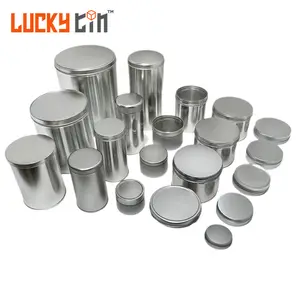Định nghĩa lại bao bì bằng
hộp thiếc kim loại tuyệt đẹp và phong cách chỉ có trên Alibaba.com. Duyệt qua bộ sưu tập ấn tượng và chọn mặt hàng phù hợp với nhu cầu đóng gói của một người. Được sản xuất từ nguyên liệu thô tốt bởi các chuyên gia hàng đầu trong ngành, những
hộp thiếc kim loại vuông này hoàn hảo cho mục đích thương mại và mục đích sử dụng. Từ hộp nhỏ đựng kẹo và thuốc lá đến hộp nhôm lớn, một bộ sưu tập phong phú đang chờ đợi người mua sắm với mức giá hấp dẫn.
Hộp thiếc kim loại đã sử dụng công nghệ tiên tiến để tạo ra một số thuộc tính mong muốn cho bao bì nhu cầu. Chúng không chỉ bền mà còn có khả năng chống hư hỏng và ăn mòn và sử dụng lâu dài. Các hộp chứa các chất không độc hại, giúp chúng an toàn để đựng các món ăn được. Ngoài việc sử dụng bao bì,
hộp kim loại trang trí sang trọng và tinh tế có thể được đặt trên bàn hoặc quầy để thêm dấu ấn cá nhân cho không gian. Người mua hàng cũng có thể tùy chỉnh các hộp thiếc này bằng cách in nổi khẩu hiệu, cụm từ hoặc trích dẫn động lực.
Các nhà cung cấp hộp thiếc kim loại đảm bảo rằng chỉ những mặt hàng có chất lượng tốt nhất mới được đưa đến tay người tiêu dùng và cung cấp ISO và CE chứng nhận để đảm bảo chất lượng và tính xác thực. Từ màu phấn nhẹ nhàng đến hộp thiếc đậm và tươi sáng với nhiều hình dạng hình học khác nhau, bộ sưu tập ấn tượng này trên Alibaba.com chắc chắn sẽ được người mua hàng yêu thích.
Hộp thiếc kim loại có nắp đậy giúp bảo quản đồ đạc trong thời gian dài. Chúng cũng có các hình dạng độc đáo như hộp đựng hình trái tim và các hình in kỳ lạ để có vẻ ngoài trang nhã.
Truy cập Alibaba.com để khám phá danh mục
hộp thiếc kim loại tinh tế không bao giờ cũ trong màu sắc hợp thời trang. Chúng được bán bởi những người bán đã được xác minh với giá dẫn đầu thị trường. Người mua sắm có thể được hưởng chiết khấu và ưu đãi tuyệt vời đối với các đơn đặt hàng số lượng lớn.














